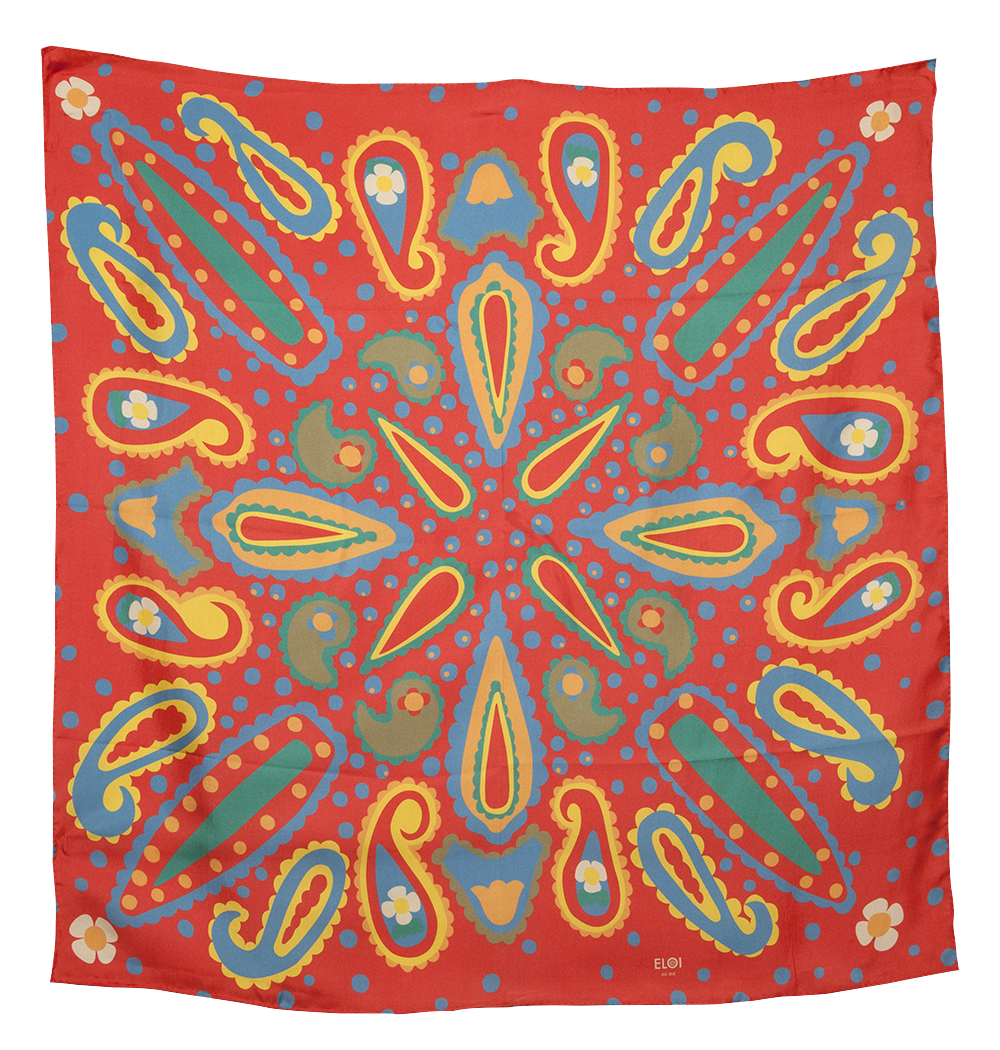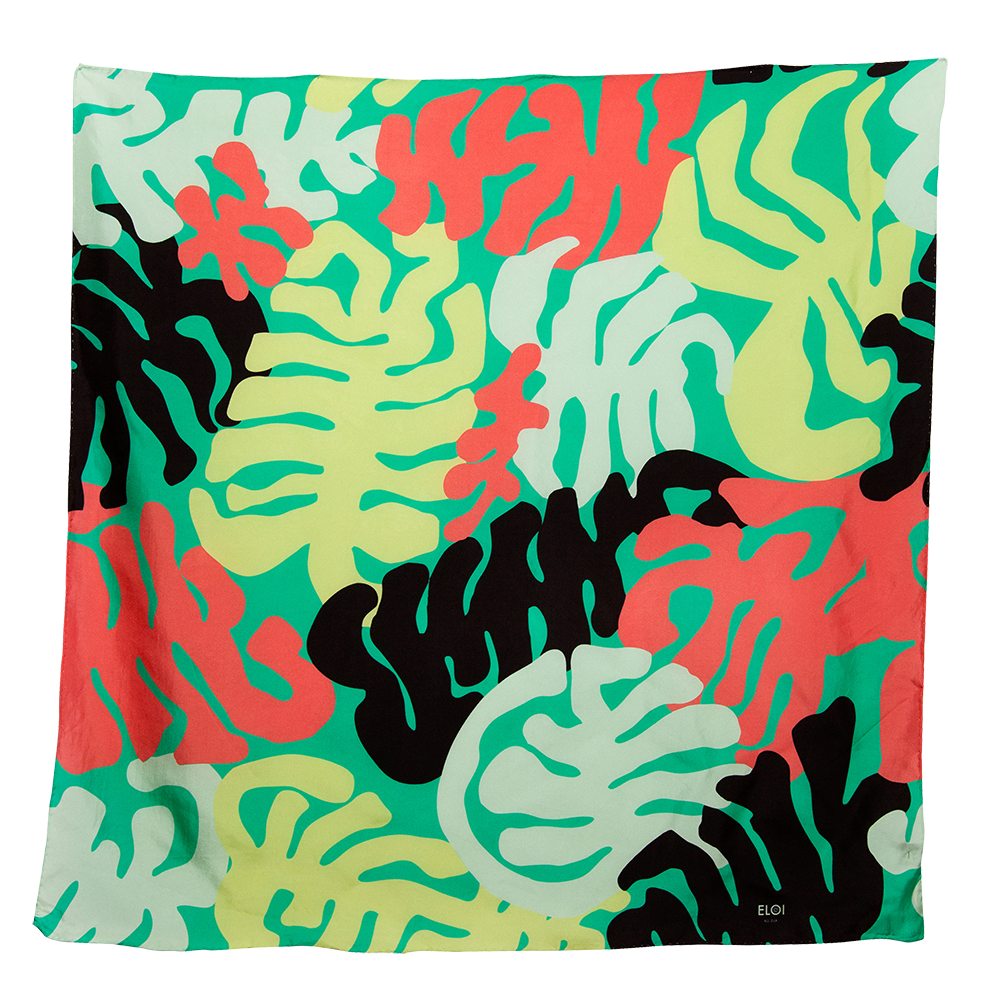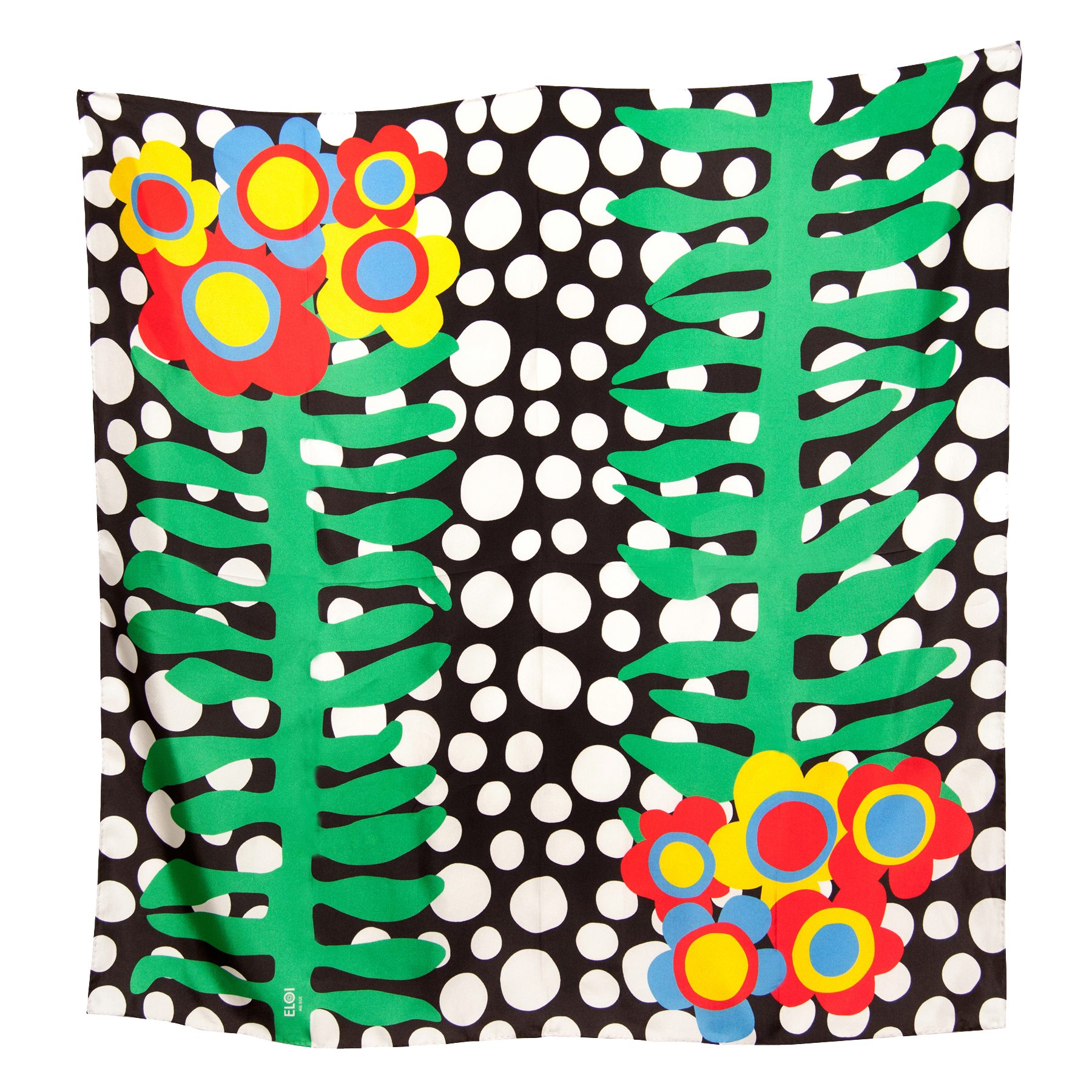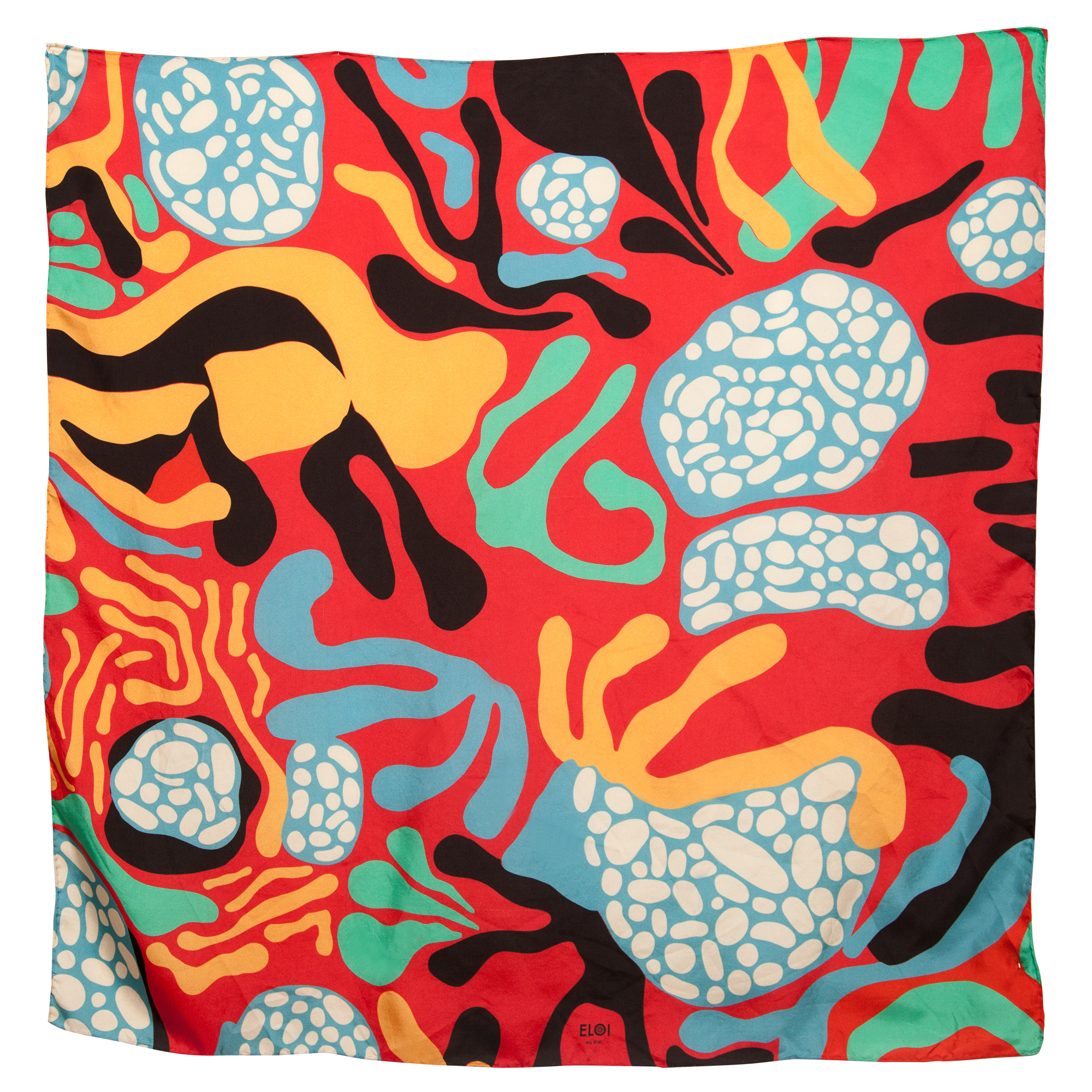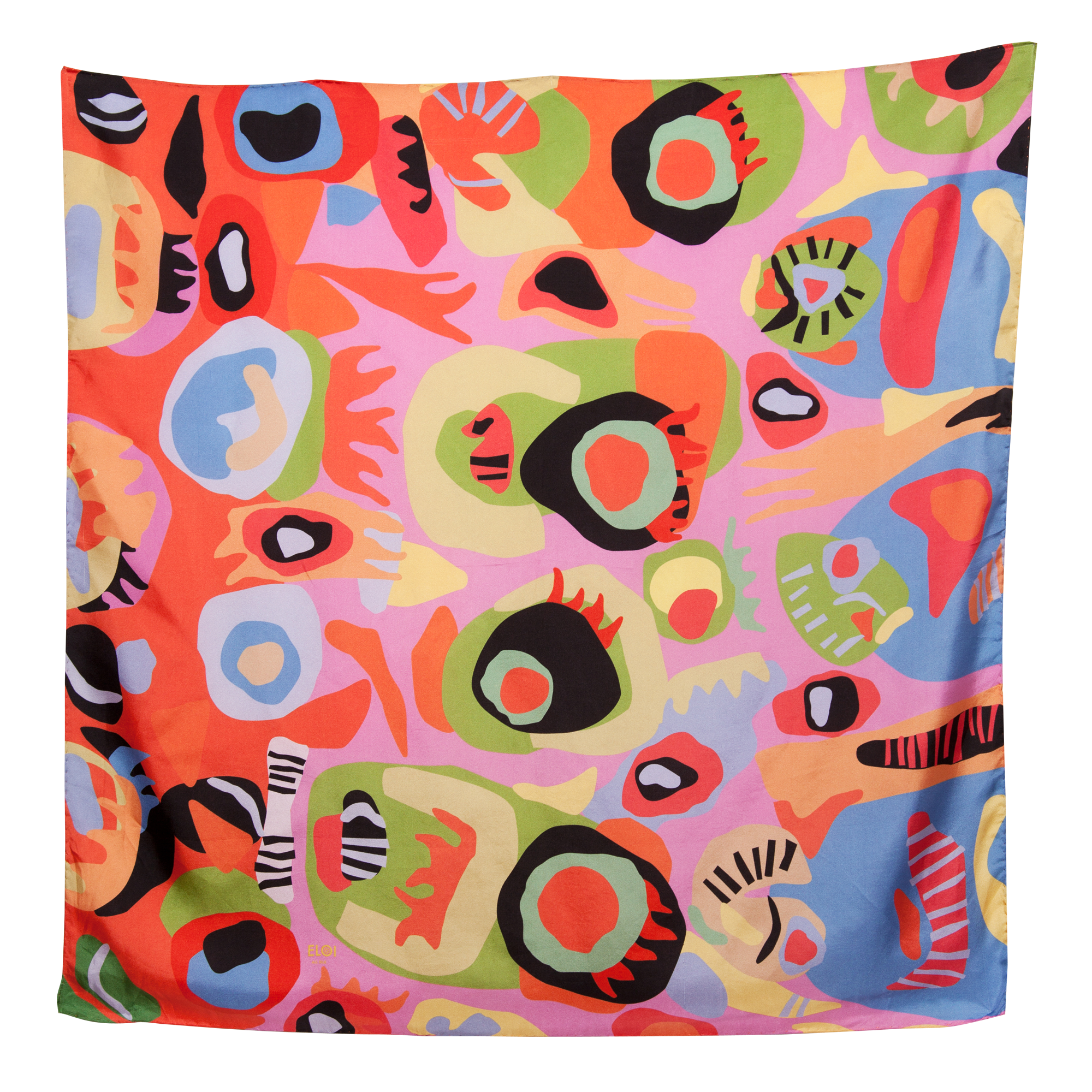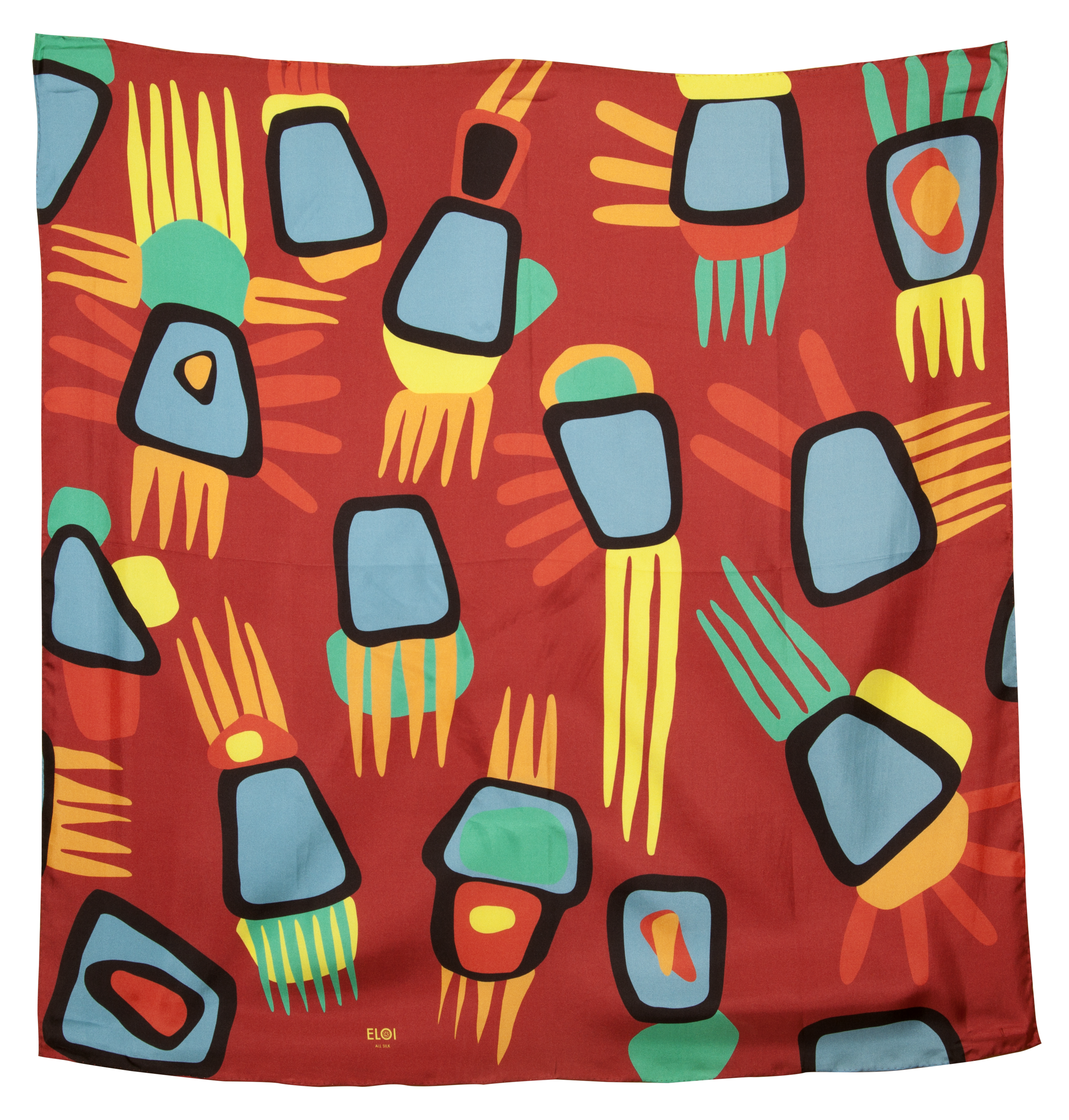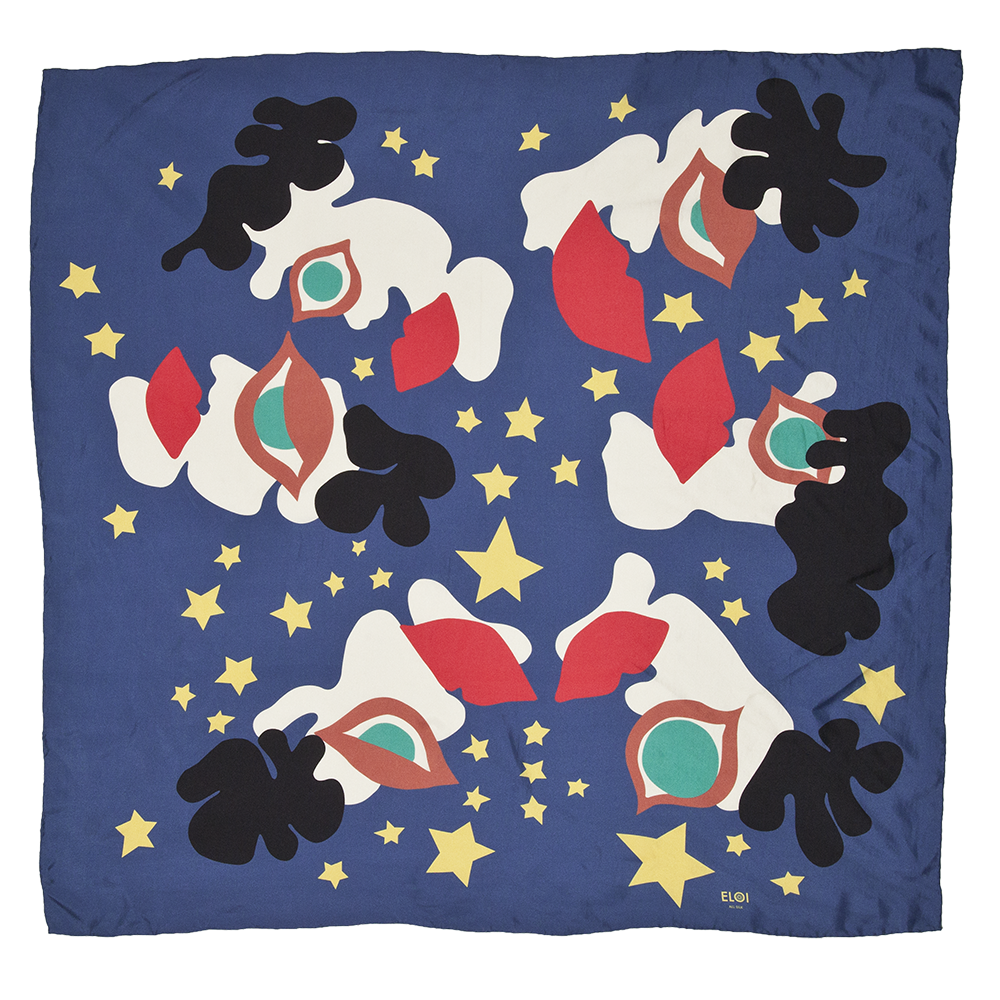From studio art to street fashion
By Sara Chojnacki
Paige Russell moved to Austin because she got the flu. She was on her way to San Francisco from Savannah, where she earned her degree in Graphic Design, and after recuperating for a week in Texas, she never left. “I was planning on moving to San Francisco but it was just so cost prohibitive, and I couldn’t bring my dog, which is the most important thing to me,” she said laughing. “It was much more reasonable in many ways to live here. All that I really require for what I do is warm weather and space to work in, and I knew I wouldn’t really get that in San Francisco. It would have possibly made up for itself in connections, but I wasn’t willing to do the whole ‘New York struggle’ again. I just wanted something easy that I could, you know, afford and not break my back.”
Russell was able to grow her brand, Eloi Studio, from Austin. “I legitimized the company right when I moved here,” she told The Fool. Her eye-catching scarves, which begin as original art pieces, are created by cutting brightly colored construction paper into entrancing designs. These collages are traced, then printed onto silk scarves. One of the appeals of an Eloi scarf is its genesis as fine art; another is its accessible price.
While her brand has the personality of an extrovert, Russell herself is the opposite. “I’m a true hermit,” she said when I asked whether she has a creative community in Austin. Her home is the ultimate creator’s hermitage: manageable and quiet with windows that let in floods of natural light. Her studio is littered with construction paper scraps and shards; her drafting table the same. As Russell puts it, “I’m definitely living my dream.”
I met with Russell at her home in April to talk about her experience growing Eloi and living the artist’s life in Austin.
Paige Russell in her Austin studio
TF: What was the process of legitimizing your brand and your company?
PR: I wanted to make a brand that was me, because obviously that’s way easier to sell and I’m not good at selling things at all. But I didn’t want it to be “Paige Russell: Scarves,” you know? I got my degree in graphic design so I know a thing or two about branding and it was more just like, getting the identity down and trying to figure out how my work would express itself if it were a human or condensing all of the things I love and believe in.
TF: Your scarves do have a very distinct look and are recognizable. You have a distinct style as well. You didn’t want it to be “Paige Russell” but it definitely is Paige Russell.
PR: It’s more that I didn’t want it to be “Paige Russell” the name. I really am uncomfortable with putting myself out there as me, so it was something I could hide behind and be the person I truly feel I am, but I definitely think that’s just the nature of being an artist. Everything that you touch ends up being in the same aesthetic realm, whether it’s intentional or not.
TF: A scarf itself is very versatile because it can be worn many ways but you can also display it, so how has that medium enhanced your art and how long did you know that’s where you wanted your art to take its form, physically?
PR: Honestly, it’s more of a way of making prints of my work, the original construction paper things. I liked the idea of it being a useful object. I love wearable art, and allowing other people to express themselves using my work.
TF: Have you thought about taking your art and turning it into something other than a scarf?
PR: Yeah, for sure. I definitely am working towards getting into.. I do a lot of custom jobs right now. That’s kind of like my bread and butter. It’s mostly scarves right now and I’m trying to branch out into different work, like for people to hire me to make different patterns so I’m slowly moving into that, but personally I don’t really wanna be the one to have to deal with production, because the more time I deal with production the less time I can make work.
TF: How have you enjoyed being a kind of one man band doing the design and production? Ideally would you being working for someone else as a designer?
PR: No, I’m completely unemployable. I’ve tried it many times, which is part of what spurred starting my own thing. I’m such a control freak and I also hate wasting my creative power and energy on other people’s visions. I’m not interested in working for anybody else. But it also gets really tough to do all this on my own. Ideally I would be in the studio all the time just making new work and then handing it over to someone else to deal with production and all the rest of it. I should hire someone, but I want it to be fully me. I’ve hired PR firms before, but it ends up being more work for me because I’m trying to control everything and I’m trying to make sure all the wording is right on everything, and it needs to be me because it’s mine.
TF: Are you influenced by high fashion or are there designers that you see yourself in step with?
PR: No not necessarily. I try to not look at that stuff, because the more you’re influenced by the things that you’re seeing, the more trendy your shit is. I’m not interested in being swayed by that because I think it’s becoming hard enough for me to create things with a pure vision rather than what’s going to sell, or what has sold in the past. I struggle with that lately, because I don’t want to be making things just because I know they’ll sell.
TF: You go into any boutique that’s supposed to be original and you see a lot of the same stuff. What is your process of obtaining a pure creative vision?
PR: I think that for every artist, the second you sell your first piece, everything kind of shifts, and to fight that mental shift in your head that this is what you need to make to sell your work because that’s every artist’s goal, to fight that as much as possible because it’s so easy to sell out and create things just because that’s what people want to buy, and I think that there’s a balance, that there’s a way of spending some of your time creating those things because you need to eat. I think that that’s the hardest part with trying not to shift your work to what people want. Any criticism or praise takes you away from artistic freedom, and you shouldn’t take either very seriously because that also shifts the way you make work.
“All success or failure is based on your own internal conflict. ”
TF: You mention criticism, which I think everyone would agree with, but how can praise affect your work?
PR: As artists, success is defined by yourself, not by other people, because the second you finish something, you just have to start over again. And it’s a very internal process. You’re proud of yourself for finishing something you think is great, but then it’s back to the drawing board: you can’t bask in that. All success or failure is based on your own internal conflict.
TF: How much time do you spend in your studio?
PR: I spend every day in there, but cutting actual paper, I’d say a few hours a day, 5 days a week. Lately I’ve been having trouble, like the last month or two, but I’m slowly getting back into it.
TF: What do you think causes that?
PR: I mean, I’ve been going through some personal stuff. Just like feeling crazy uninspired. It can be like torture, what I’m trying to figure out is how not to beat myself up for not being in the studio all the time. The past month or two, like I said, I’ve only been in there about 25 hours a week. I think that it comes in waves and to not beat yourself up is important you need to just embrace those times you can’t work because that brings on another round of nonstop work, at least for me.
TF: How were you able to get to the point where this is your full-time job?
PR: When I moved here, I had a good amount of money saved up from selling the original pieces, and I was selling scarves before that; I just hadn’t fully branded yet. So I had a few months to get it together. And then just emailing people like crazy trying to get press. Press leads to exposure, leads to sales, leads to custom jobs and stuff like that.
TF: Do you feel like this is a milestone for you, that you’ve made it in some way?
PR: I wish I could say like, oh yeah I feel like I’ve made it. I mean, I’m definitely living my dream. A lot of artists can’t do this, but it goes back to that thing of yourself judging success.
TF: What have been your greatest public and private victories on this journey?
PR: Public victory was when Susie Lau did a write-up on me; that was a total surprise. I had emailed her and I was like in her junk folder. And she has an insane blog, like she has a bunch of high fashion stuff. That led to the Huffington Post which got me so many sales. It was insane. So that was probably the best public one. But then, privately, I don’t know, it’s hard not to equate the private to the public. Being able to support myself has been incredible. I never really thought that that was impossible, I guess I just didn’t even really think about it, honestly. There wasn’t even… well, there was a lot of doubt in my mind, but I never thought about the alternative.
TF: What advice do you have for young artists who are looking to get into design, or even fashion?
PR: I don’t give good advice. I need some advice. I feel so spoiled because everything just kind of ended up falling into place for me. And I don’t know how. I’m still like “What? How did this happen? Why do people want me to make stuff for them?" I think that more just finding your aesthetic and trying everything until you feel like you’re not necessarily content, but once you find your language, it’s undeniable. If it’s truth to you then people will listen.
You can purchase one of Paige Russell's beautiful scarves at eloi.us
Follow her on Instagram @eloistudio
